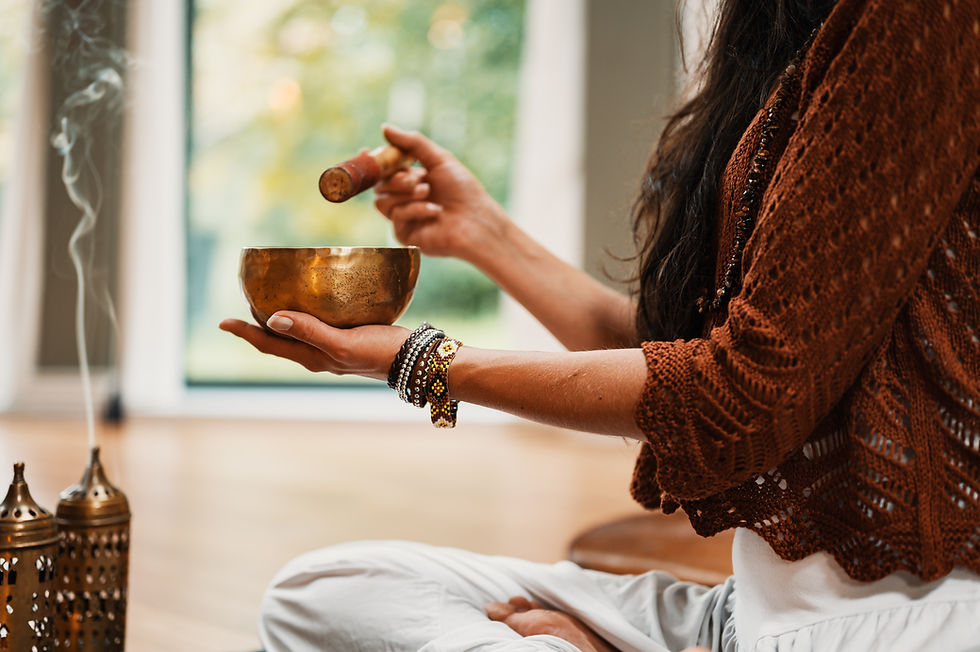How to meditate in easy steps
- Dr. Sepi Sefy

- Apr 2, 2021
- 4 min read
Updated: Dec 18, 2022
Meditation is an ancient practice originated around 5000 BCE, a practice that has been conducted in many faiths including Judaism, Hinduism, Jainism, Sikhism, ancient Egyptian and Chinese faiths and of course in Buddhism.

Throughout the years scientists have found meditation to be fascinating as it contributes to many positives attributes to one’s life including;
Reducing Stress
Controlling Anxiety
Enhances self awareness
Promotes emotional health
Lengthens attention span
Reduces memory loss
Generates kindness and understanding
Helps fight addictions
Improves sleep
Helps to control pain
Can decrease blood pressure
Helps to promote compassion
Helps with physical health of the brain
Now these are just some of the benefits. There are many other benefits which are closely related to spiritual wisdom, or consciousness.
But how do we Meditate?
Writing from a Buddhist perspective, as I am a Buddhist, there are 3 types of meditations that I practise based on the teachings of Sogyal Rinpoche.
Before we dive into the 3 types of meditation there are a few things to consider.
Hand Mudras
Positioning of the hands, called Hand Mudras, you may choose a hand Mudra that is meaningful or helpful at one particular time. However below I have stated the cupping of hands for each mediation technique, but, of course you may modify your meditation ritual as you see fit once you are a little more experienced.
Breathing techniques
Breath deeply but relaxed during your meditation, by pushing your belly in when exhaling and pushing your belly out when inhaling. Allow your body to work in rhythm with your breath.
Sitting technique
Sit on a cushion on the floor allowing you to have a comfortable straight back, which helps you to stay alert and strengthens your spine. Have your legs bent either in a lotus position; if you are advanced in your practise and flexible, or just bent in crossed legged position.
Now we have covered the basics let's look at the different meditation techniques;
Object focus meditation
This is a practice where you put an object in-front of you, something like a candle or a picture of a spiritual leader such as Dalai Lama. Anything that will promote compassion and inspire you to focus.
Sit comfortably with your back straight and your legs crossed or if that’s uncomfortable legs straight in front of you. Have ur hands in a cup tucked into you underneath your bellybutton.
Focus on the item, let your glaze go slightly blurry as you focus on the item. allow your mind to wonder, and understand your mind is just doing what its suppose to do. However whenever you realise you are thinking, bring your focus back to your gaze, and breath.
Mantra Meditation
Mantra meditation is where the practitioner bombards the mind with a sentence over and over again, focusing on the words and their effects. It is not a secret that sounds play a big part in our environment, scientist have found that sound changes the particals in the air. In fact under a microscope, water and solubles turn into shapes when exposed to sound. Sound carries a heavy influence in our environment, our lives and the universe. For example, a school conducted an experiment where there were two plants left in a hallway between classes, peers were encouraged to speak nicely and warming to one plant and effectively bully the other plant. The plant that was treated with compassion grew tall and flourished whilst the other died.
With that we put the emphasis on the effectiveness of sound and mantra meditation.
There are many mantras you can say. In the Buddhist tradition generally a senior monk or master will give his student a sacred mantra which no one else will know about, which is designed to assist the student in his journey to enlightenment. However there are many mantras you can research and incorporate into your mediation practise.
A very effective mantra is;
Om Mani Padme Hum.
This mantra invokes the Compassion in you. Invokes the compassion of Buddha and assists you to strengthen your practise.
To practise this method you will need a meditation prayer beads called a Mala. The Mala has 108 beads, 100 for the mantra and extra 8 for the times you lost your focus.
Hold the Mala in your left or right hand, whilst sitting in the position outlined above. With every mantra you cross over a bead so you can keep count during your meditation.
Breath Meditation
This is the most well known and well practised meditation technique. It’s very simple in its theory but difficult to master in practise. This meditation technique requires you to focus on the breath, the exhale and inhale repeatedly. Every time a thought is present in your mind, you have to say to yourself ‘I’m thinking’ to acknowledge the thought and bring your focus back to the breath.
The goal of meditation is recognising and understanding the nature of the mind. When we understand the nature of the mind we can easily navigate to understand that there is thought 1 and thought 2, being able to understand there is a gap between thought 1 and thought 2, and the gap in-between those thoughts lies peace, wisdom and serenity. The goal of the meditator is to widen that gap more and more within the practise. There is a misinformation that meditation’s goal is too ‘think of nothing’ which we all know is not possible because it’s going against the instinct of the mind. Monks spend their entire lives trying to control and master the mind to effectively ‘think of nothing’’ cause there in the ‘nothingness’ lies the infinite wisdom of the universe.
In my experience, meditation works best if all three methods are done back to back respectively. It allows the breath, the vision, the sound and the mind to all work together.
Happy Meditating!
Namaste
The Earth Healer



Comments